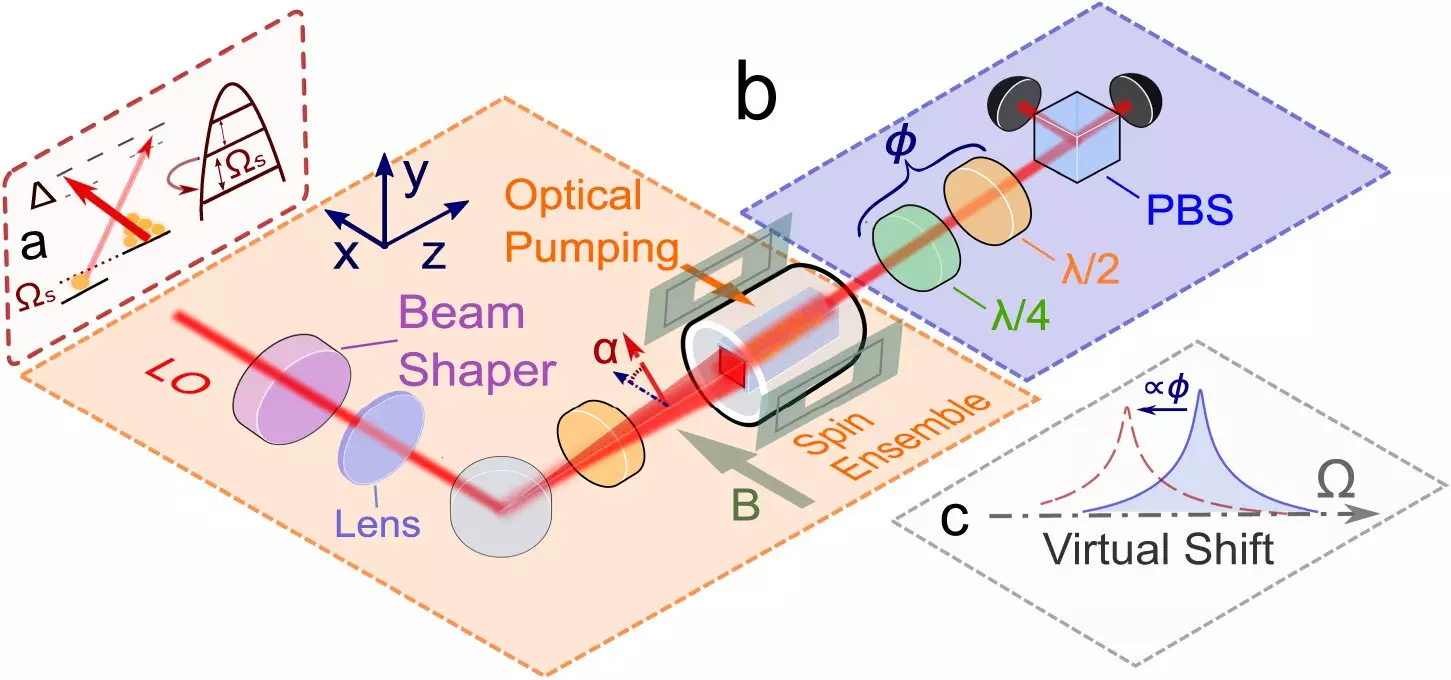Quantum technology has long been hailed as the future of science and innovation. The ability of quantum sensors to detect and monitor extremely delicate and minute variations in magnetic fields and tissue conductivity offers immense promise for medical examinations and monitoring devices. However, the development of quantum sensors has been hindered by the challenge of distinguishing signals of interest from various types of noise. In an exciting breakthrough, researchers from the Niels Bohr Institute (NBI) at the University of Copenhagen have successfully tackled this obstacle, bringing quantum sensors closer to practical applications.
Advancements in Quantum Sensing
As life processes encompass tiny variations in magnetic fields and tissue conductivity, quantum sensors have the potential to revolutionize medical examinations. By exploiting the phenomena at the atomic scale, these sensors offer unparalleled accuracy compared to traditional sensors. The team at NBI has made significant progress in overcoming the challenge of isolating signals of interest from background noise, paving the way for the practical implementation of quantum sensors.
The underlying principle of quantum sensing relies on the behavior of atoms, electrons, and photons as described by quantum mechanics. Rather than possessing fixed physical properties, these particles exist in specific states. Quantum sensing involves preparing quantum states of light, which then interact with a probe quantum system influenced by the forces or fields being detected. The information on the measured quantity is carried by the light and can be accurately detected.
One of the primary challenges in quantum sensing lies in the engineering of the quantum probe system to accurately capture the signal of interest while minimizing unwanted noise. While traditional sources of noise, such as electronic equipment in the environment, can be eliminated, the effects of quantum mechanics persist. Quantum noise arises from the uncertainty associated with the arrival of light particles, also known as shot noise, as well as the quantum backaction caused by the interaction between photons and the probe sensor.
The NBI team addresses this challenge by developing a methodology to “hear” the noise emerging from the quantum world. By identifying and removing quantum noise, the team ensures that the signal of interest remains intact and can be effectively utilized for monitoring and examination purposes.
While the potential applications of quantum sensors in the medical field, such as monitoring the heartbeat of an unborn child or brain activity, are undoubtedly groundbreaking, there exist broader possibilities for these sensors. Magnetic quantum sensors, for instance, hold promise for improved gravitational wave detection.
Gravitational waves, initially described by Albert Einstein, have been theorized and subsequently proven to exist. However, their signature is weak compared to other cosmic signals, necessitating enhanced monitoring methods. Magnetic quantum sensors, in combination with gravitational wave antennas, offer a potential solution to this challenge. By utilizing the unparalleled sensitivity of quantum sensors, researchers can gain a deeper understanding of the origins and development of the universe.
The breakthrough achieved by the researchers at the Niels Bohr Institute signifies a significant step forward in the development of quantum sensors. By overcoming the challenge of isolating signals of interest from noise, quantum sensors are poised to transform medical examinations and monitoring devices. Furthermore, the potential applications of quantum sensors extend beyond the medical field, encompassing areas such as gravitational wave detection. As the field of quantum technology continues to advance, further breakthroughs and applications are on the horizon, heralding a new era of precision sensing and measurement.



Leave a Reply